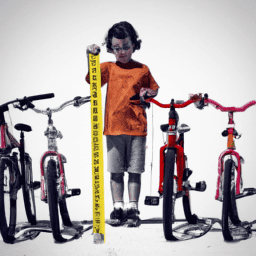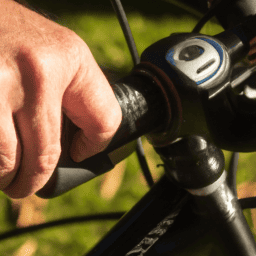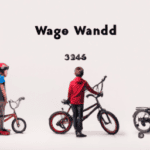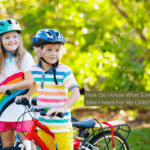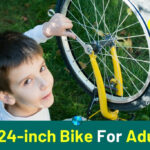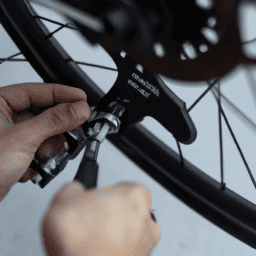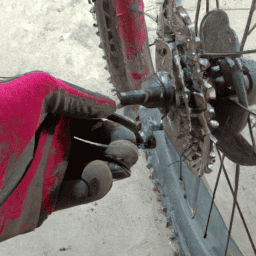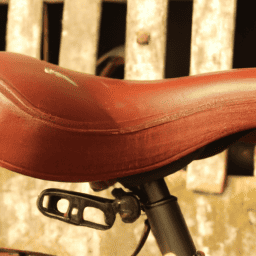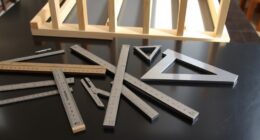When purchasing a bicycle for your child, numerous considerations come into play. Speaking from my own experience as a parent, identifying the appropriate size and type of bicycle is crucial to ensure your child enjoys a comfortable and safe riding experience.
In this article, I will guide you through the process of determining what size bicycle is appropriate for a 7-year-old child.
First and foremost, it is crucial to take your child’s height into consideration. The size of the bike frame should match your child’s height, so that they can easily reach the pedals and handlebars.
Additionally, you should measure your child’s inseam to ensure that the bike’s seat height is adjustable and fits their leg length. Don’t worry if this sounds overwhelming – I’ll explain how to measure these factors in detail.
By the end of this article, you’ll feel confident in choosing the right size and type of bike for your child.
Key Takeaways
- Finding the right size and style of bike for comfort and safety is crucial when buying a bicycle for a 7-year-old.
- Taking the child’s height and inseam into consideration is essential for determining the appropriate bike frame size.
- Customizing bike fit for comfort and confidence by adjusting handlebars and pedals is recommended.
- Choosing the right style and type of bike, such as mountain bikes or balancing bikes, depends on the child’s skill level and preferences.
Determine Your Child’s Height
If you’re wondering what size bicycle to get for your 7-year-old, it’s important to first determine their height so they can ride comfortably and safely.
One way to estimate your child’s height is by using a growth chart comparison. You can compare your child’s height to the average height for their age and gender on the chart to get a rough estimate. Keep in mind that this method may not be entirely accurate since every child grows at their own pace.
Another way to determine your child’s height is to measure them yourself. Stand them up against a wall and mark the top of their head with a pencil. Then, use a measuring tape to measure from the floor to the mark. This will give you a more accurate measurement to use when choosing the right size bike for your child.
Once you have determined their height, the next step is to measure their inseam.
Measure Your Child’s Inseam
When it comes to choosing the right bicycle for your child, it’s crucial to know their inseam measurement. To measure your child’s inseam, you’ll need a tape measure and their help.
Understanding inseam requirements for bicycles is also important to ensure your child’s safety and comfort while riding. Let me guide you through the process of measuring your child’s inseam and finding the perfect bike for them.
How to Measure Your Child’s Inseam
First, measure your child’s inseam by placing a book between their legs and measuring from the floor to the top of the book. This will give you a clear idea of the size bike they need to ride comfortably.
Measuring inseam tips and tricks include ensuring that your child is standing upright and barefoot, and that the book is snugly placed between their legs. Also, make sure that your child’s feet are flat on the floor and that they’re not wearing any thick clothing that could skew the measurement.
Once you have the inseam measurement, it’s important to understand the minimum and maximum inseam requirements for bicycles. These requirements can be found on the manufacturer’s website or by asking a bike shop specialist.
It’s essential to choose a bike that’s appropriate for your child’s size because a bike that’s too small or too large can lead to discomfort, difficulty riding, and even injury. Knowing how to measure your child’s inseam is the first step in finding the right bicycle for your child, and it’ll ensure that they have a safe and enjoyable experience riding their new bike.
Understanding Inseam Requirements for Bicycles
Understanding the minimum and maximum inseam requirements for bikes is crucial in ensuring that your child’s riding experience is safe and comfortable. Inseam measurement refers to the distance between the ground and your child’s crotch. This measurement is essential in determining the appropriate bike frame size for your child. The table below shows the recommended inseam range for different bike sizes.
| Bike Size | Inseam Range |
|---|---|
| 12-inch | 18-20 inches |
| 14-inch | 20-22 inches |
| 16-inch | 22-24 inches |
| 18-inch | 24-28 inches |
| 20-inch | 25-30 inches |
It’s important to note that the inseam range is just a guideline, and factors such as your child’s height and riding style should also be considered when selecting a bike size. Choosing the right size bike will not only ensure your child’s safety but also make the riding experience more enjoyable.
Consider your child’s riding experience by taking into account their skills and preferences. Are they interested in off-road riding or just cruising around the neighborhood? The terrain and riding style will also affect the type of bike and features you should look for. Keep these factors in mind when selecting the perfect bike for your child.
Consider Your Child’s Riding Experience
Take into account your little one’s pedal expertise when selecting the perfect bike size for them. If your child is just starting out, it’s best to consider balance bikes or bikes with training wheels. These options will allow them to get comfortable with the feeling of being on a bike before they have to worry about pedaling and balancing at the same time.
On the other hand, if your child is already a confident rider, you may want to consider a bike without training wheels. This will give them more control and allow them to learn how to balance on their own.
When selecting a bike size, it’s important to make sure that your child can comfortably reach the pedals and handlebars. You may also want to consider the weight of the bike and how easy it is for your child to maneuver.
Once you’ve selected a bike size, it’s a good idea to test the bike for fit and comfort. This will ensure that your child is able to ride safely and comfortably, which will make the experience more enjoyable for everyone involved.
Test the Bike for Fit and Comfort
Once you’ve picked out the perfect bike, it’s crucial to hop on and make sure it feels like a comfortable fit for your child’s body.
One of the most important things to check is the height of the bike. Your child should be able to stand over the bike with both feet flat on the ground.
You should also adjust the handlebars to make sure your child can comfortably reach them without overreaching. Another important factor to consider is the pedals.
You should select appropriate pedals that your child can easily reach and use. Additionally, there are tips for customizing the bike fit to ensure that your child feels comfortable and confident while riding.
Once you have made all the necessary adjustments, your child should be able to ride the bike smoothly and with ease. With the right fit, your child will be able to enjoy the ride and have fun.
Now, let’s move on to choosing the right style and type of bike for your child.
Choose the Right Style and Type of Bike
Now it’s time to pick the perfect bike style and type to suit your child’s needs and preferences.
One of the most important decisions you’ll have to make is whether to go for a mountain or road bike. Mountain bikes are ideal for off-road terrain and rough trails, but they tend to be heavier and require more effort to pedal. Road bikes, on the other hand, are lighter and faster, making them perfect for smooth pavements and long distances.
Another crucial decision is whether to choose a balancing bike or a pedal bike for your child. Balancing bikes are great for helping your child develop their sense of balance and coordination, but they may not be suitable for longer distances. Pedal bikes, on the other hand, are perfect for children who are already comfortable with balancing and want to explore more challenging terrains.
Ultimately, the choice between balancing and pedal bikes will depend on your child’s skill level and preferences.
Frequently Asked Questions
What are the best brands for children’s bicycles?
As an experienced cyclist, I can tell you that choosing the right brand for your child’s bike is crucial. Some top rated models are from Trek, Specialized, and Giant. It’s important to consider your child’s age and height to ensure the perfect fit.
How often should a child’s bicycle be serviced?
As an experienced cyclist, I know that the frequency of maintenance and regular check-ups are vital to ensure your child’s safety while riding. It’s crucial to have their bike serviced every 6 months to maintain optimal performance and catch any potential issues before they become dangerous.
Are there any safety accessories that should be purchased with a child’s bicycle?
As a knowledgeable cyclist, I highly recommend purchasing bicycle helmets and reflective gear to ensure safe riding for children. These accessories are necessary for visibility and protection, regardless of the size of the bicycle.
Can a child’s bicycle be customized to fit their specific needs?
As a knowledgeable bike enthusiast, I understand the importance of fitting techniques and adjustability options to customize a child’s bicycle. By taking into account their specific needs, we can ensure a comfortable and safe riding experience.
What is the average lifespan of a child’s bicycle?
As a parent, keeping your child’s bicycle in good condition is crucial for extending its lifespan. Regular bicycle maintenance and repair can help ensure durability. Additionally, keep an eye out for growth spurts and upgrade to a larger bicycle when necessary.
Conclusion
In conclusion, choosing the right bike size for your 7-year-old can be a daunting task. However, by following a few simple steps, you can ensure that your child gets the perfect fit.
Remember to determine your child’s height and inseam, consider their riding experience, and test the bike for fit and comfort.
When selecting a bike, it’s important to choose the right style and type. Whether it’s a balance bike, a BMX bike, or a mountain bike, make sure it’s appropriate for your child’s needs.
Additionally, don’t forget to prioritize comfort, as an uncomfortable bike can lead to a less enjoyable ride.
Overall, finding the right bike for your little one can be a fun and exciting process. With a little patience and attention to detail, you can help your child develop a love for cycling that will last a lifetime.
Happy riding!
